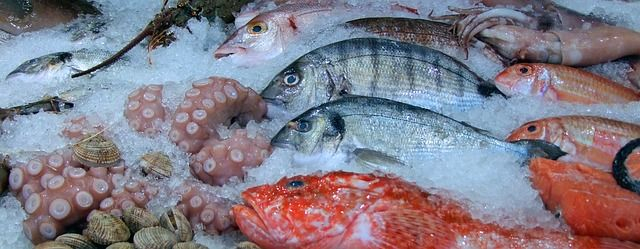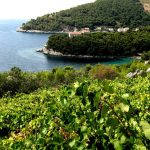June 3, 2020 — Invasive species drawn by waters warmed by climate change may endanger many of the Adriatic’s signature dwellers.
It has been several years since divers first warned of the chaos that reigns in the underwater world. First, they began to notice that sponges were dying out in the Adriatic. Then, in some central Dalmatian locations, mussels disappeared.
Then the noble pen shell clam, a beautiful, elegant Mediterranean species, began dying, with literal hit the fields of the clam turned it into tombs. All this is accompanied by records and expert evidence of amateurs and professionals about elevated sea temperatures.
In Istria, the leader of Umag’s fishermen, Danijel Kolec, told Slobodna Dalmacija that the sponges in the Adriatic bear no resemblance to their ancestors. They’re now full of acid.
“There can be so much acid that people now have to wear gloves because blisters come out of their hands when they come in contact with [the sponges,” he said. “In addition, we lost sea urchins, and seaweed, but the population of crabs has increased significantly. Especially Armaron or Tenkista as we fishermen call him, because of the characteristic strong red-pink pliers.”
All this knowledge only builds on what researchers and locals have been noticing for a long time. It is an influx of new fish species, which due to their aggressiveness and toxicity pose a specific threat to the fauna of the Mediterranean. They are led by several of the most deadly, for example, the blue-spotted trumpeter, which is also called the Lessepsian sprinter due to its rapid conquest of the Mediterranean. It is among the 100 ‘worst’ invasive species in European waters.
Prominent Croatian researcher Dr. Jakov Dulčić, head of the Laboratory for Ichthyology and Coastal Fishing of the Institute of Oceanography and Fisheries in Split, said the last census of fish from 2000 found 664 species classified in 156 families in the Mediterranean.
“This number has certainly changed over the last 15 years so that now it could already be around 772 species,” he told the paper. “The biodiversity of ichthyofauna or fish stocks of the Mediterranean Sea has undergone dizzying changes in the last few decades. There have been a number of migrations.”
Climate change has warmed the Adriatic, enticing thermophilic fish who prefer warm waters.
Where did these fish come from? Most of the new species came to the Mediterranean from the Red Sea, via the Suez Canal. They are accompanied by those from the Atlantic Ocean.
There is a smaller number of those who migrated through ballast water, escape from aquaculture and aquariums.
“The Mediterranean Sea, one of the most complex marine ecosystems, inhabits rich and diverse wildlife, disproportionate to its dimensions,” Dr. Dulčić said. “Currently, this world is under the influence of various pressures, mainly caused by human activity such as climate change and bioinvasions.”
The Mediterranean’s location makes it sensitive to climate change, he added.
The opening of the Suez Canal, and then the construction of the Aswan Dam, created a convenient path for foreign marine species to enter the Mediterranean Sea. Tropical fish entered, including the so-called Lessepsian migrants resembling blue-spotted trumpeters. Or species of Atlantic origin. As a result of the warming trends of the Mediterranean, as well as the increased intensity of shipping, they are spreading rapidly throughout the Mediterranean basin.
Over 100 foreign, exotic species now roam the Mediterranean and Adriatic Seas. One of the most significant threats is the blue-spotted cornetfish, a distinct predator that feeds on many important fish species. Therefore, its impact on the food chain is very high.
The peacock fish, for example, arrived in the Mediterranean from the Indian Ocean through the Suez Canal. It was first spotted in 1991 in Israeli waters. In 2012 it was caught in Lebanon and has been spreading north ever since.
Dulčić said that fortunately there are no finds in the Adriatic yet, but there are in Italy, near the Gulf of Taranto, and in the Ionian Sea, near the islands of Kefalonia and Corfu, and in Greece, and may reach Croatia’s coastal waters in due time.
The same fish caused an extremely high mortality of benthic organisms along the American and Caribbean coasts since the 1980s when it ‘escaped’ from a Florida aquarium.
The predator reduced the numbers of 40 species of coral fish by about 65 percent in those waters. At the same time, the catch of certain species of fish decreased, primarily from the family of barbed wire.
A peacock sting can be deadly. The large number of this species, primarily in the entire Levant, leads to fears that the same scenario is being prepared in Mediterranean waters.
“The sea peacock species spread quickly, has high fertility, and grows faster than other fish. If this species reaches the Adriatic Sea, then the temperature could be a limiting factor for its northern parts in the first place, especially in winter when sea temperatures are low, as it has been so far for some other foreign species,” Dulčić explained.
The key question is what awaits us, what kind of future is in store for us? The Mediterranean climate is expected to become warmer and drier, with increasing year-on-year variability due to extreme heat and drought.
The warming trend experiencing the Mediterranean is also affecting the distribution of its indigenous species. How this will affect the very sensitive Mediterranean Sea is still unknown.










